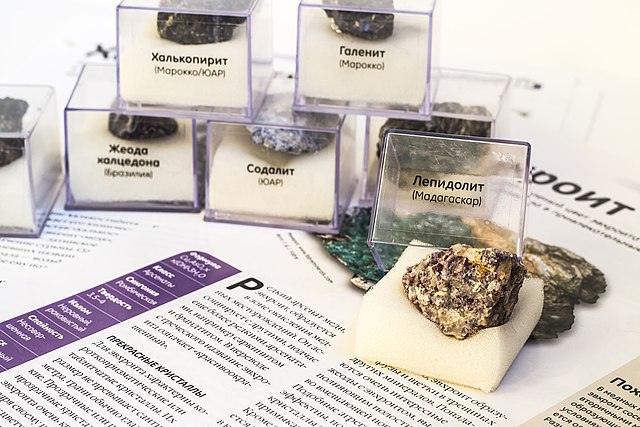George Frederick Kunz was an American mineralogist and mineral collector.
A typical Olmec votive (ritual) axe with the were-jaguar motif (note the downturned mouth and the almond-shaped eyes). This particular artifact is known as the Kunz Axe, first described by George Kunz in 1890.
Kunzite from Nuristan
Group: Charlotte Stillman, Mrs. Elgin R. L. Gould, Mrs. W. Eyre Lambert, Mrs. H. P. Davidson, George Frederick Kunz, and William Fellowes Morgan. c. 1910-1915
Mineral collecting is the hobby of systematically collecting, identifying and displaying mineral specimens. Mineral collecting can also be a part of the profession of mineralogy and allied geologic specialties. Individual collectors often specialize in certain areas, for example collecting samples of several varieties of the mineral calcite from locations spread throughout a region or the world, or of minerals found in pegmatites.
A collection of identified rocks and minerals on display. The black stones on the left are obsidians; the lighter, hollow rocks are geodes.
A collection of smaller mineral samples stored and displayed in clear cases
Azurite specimen from the Morenci mine, Morenci, Arizona, USA. Morenci is the largest copper mine in North America, and Morenci copper mineral specimens are visually appealing, abundant, and relatively inexpensive.
Creedite specimen, 11 x 7 x 3 cm, from Santa Eulalia, Chihuahua, Mexico; formerly in the Perkins D. Sams collection







